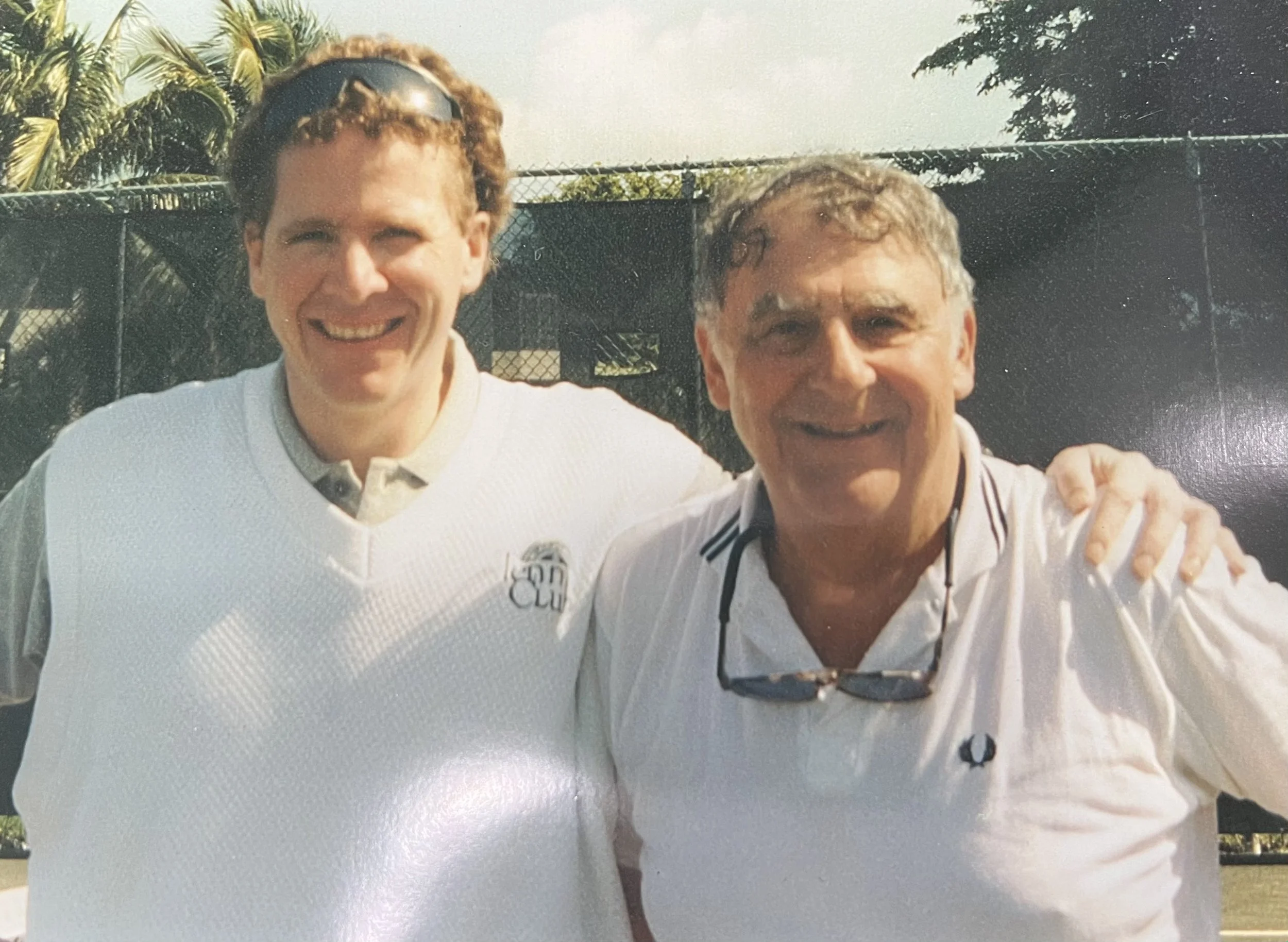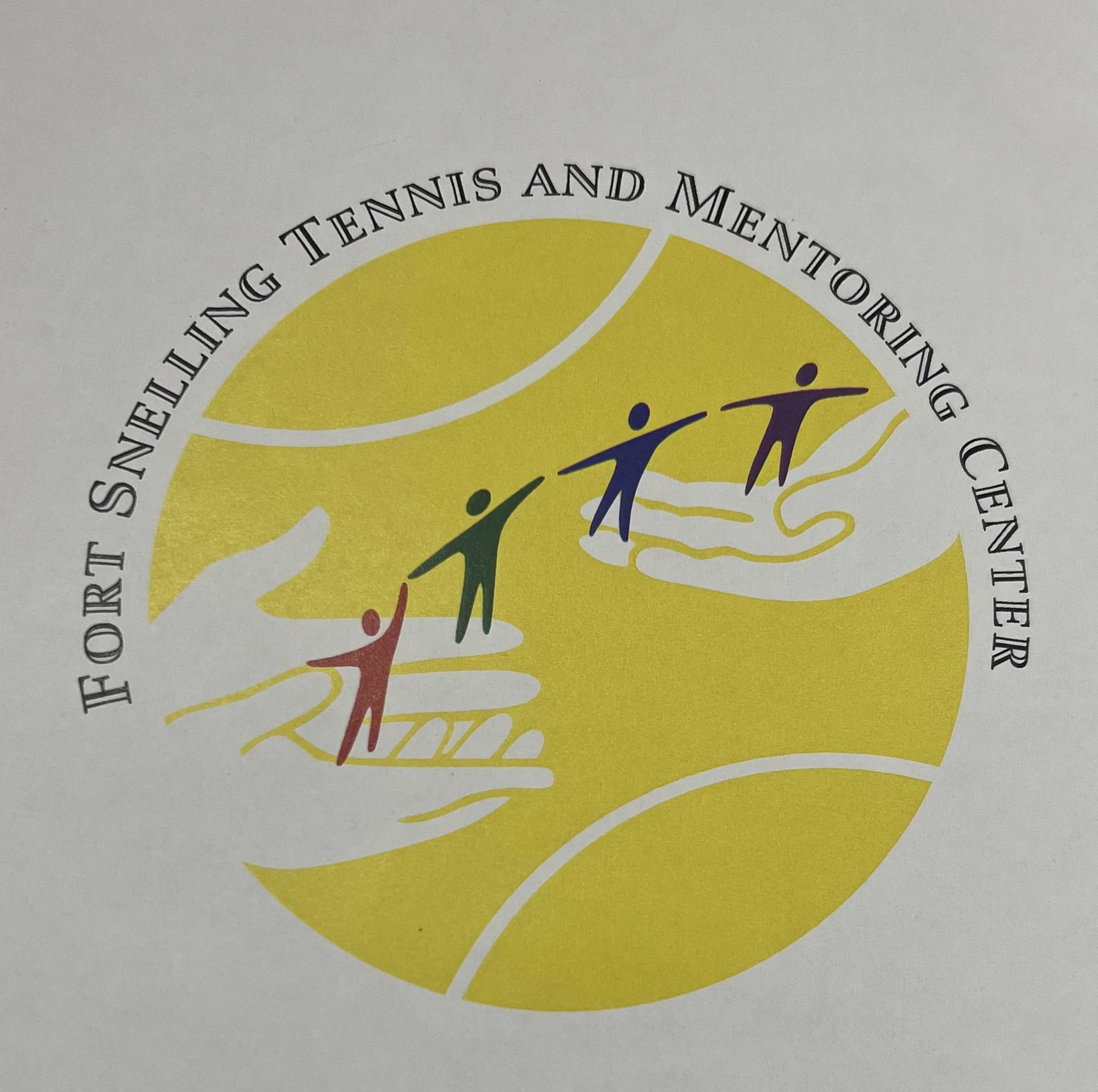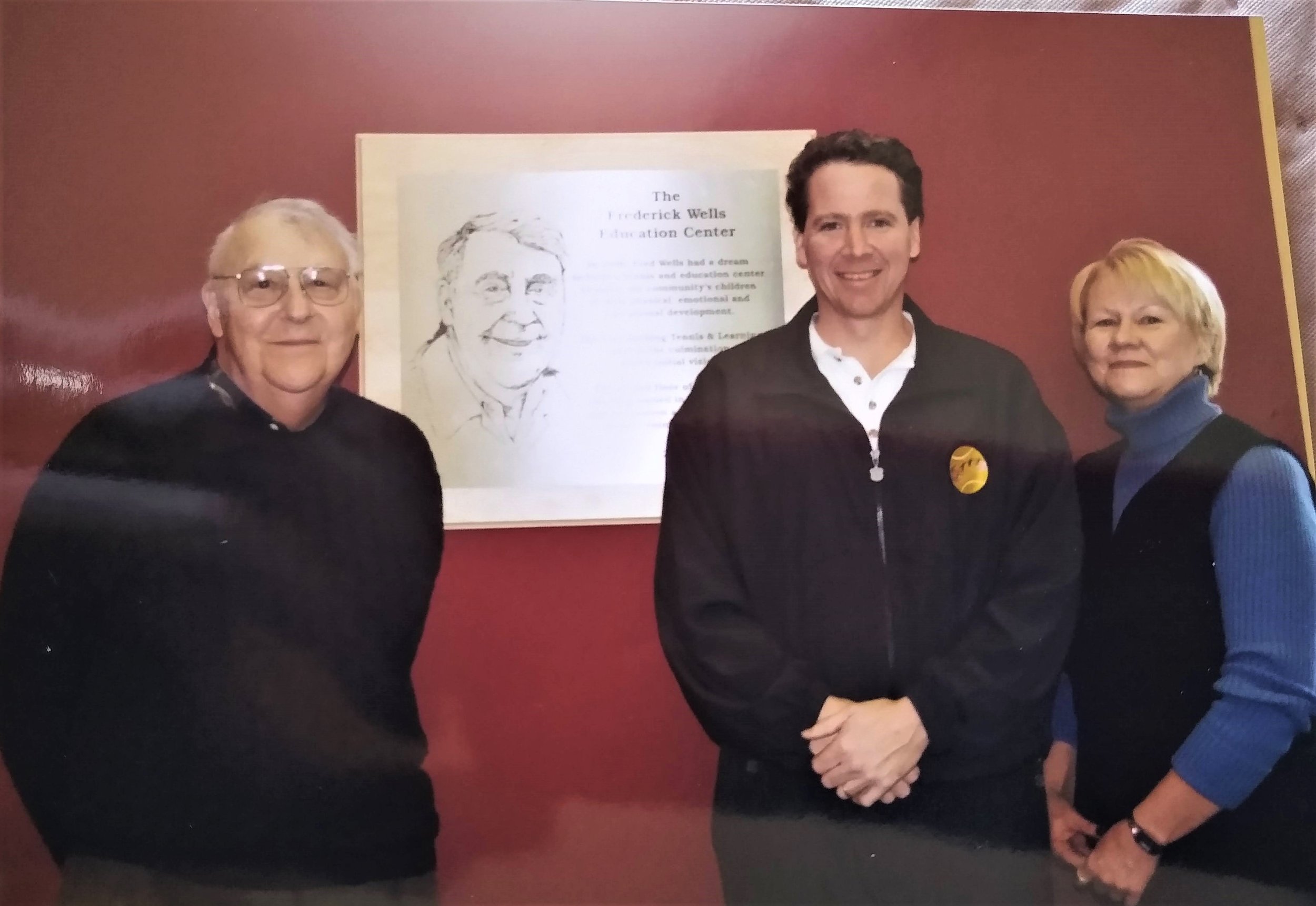20th Anniversary Spotlight: Dan Shannon
What better way to kick off our 20th Anniversary spotlight than with someone who saw our organization in its earliest days? I mean when it was barely rough sketched on yellow-lined paper with most of the plans still living in Fred Wells’ head. Dan Shannon’s interview below will take you on the incredible journey of how this all came to be. One lesson at Woodhill Country Club changed his life and career path forever; that student was none other than Fred Wells. In 1996, the two began working on a brand-new tennis organization and worked for almost 6 years to open the doors here in Fort Snelling. It wasn’t smooth sailing, but it was clear that two passionate tennis players were going to find a way to create a welcoming place for everyone, no matter their background, to play the game they loved so much. I think I can speak for all of us when I say, we are SO grateful for their efforts.
Q: What is your background in tennis?
Dan Shannon: As a kid, I played tournaments and high school tennis at Minnetonka High School. After high school, I went on to play at the University of Montana. I moved back to Minnesota after college and started teaching at different clubs. During this time, I was getting my master's degree in Human Development from St. Mary’s.
Q: How did you meet Fred?
DS: A mutual friend introduced us. I met Fred at 10 o’clock one Saturday morning in 1993 or 1994 and continued lessons. We just clicked. He hadn’t played tennis in a long time but fell in love with the game. He was kind and fun. A ferocious competitor but also the first guy to say nice shot.
In 1996, Fred asked me to have breakfast at the Original Pancake House. Within a week or two, we met down at his office, where I met Linda Langeness, who had been with Fred for 25+ years, and, like Fred, we hit it off. Linda was the glue behind the scenes that kept everything moving forward. We were all on the same page, and just kind of got down to it.
Q: What are some things you remember about the process of building and creating this organization?
DS: Fred was introduced to Bill Roddy, and that got Fred intrigued about what Bill was doing. It began his relationship with USTA Northern to help fund the Multicultural Tennis Program. The initial idea was a small facility that had a few courts, a classroom and maybe a computer lab. Fred's goal was to build the facility on public land, and after a certain time, it would either work or it would become the property of the city.
We approached the Minneapolis Park Board, and we were received well. We were also in meetings with both the Northern Section and the Minneapolis Public Schools about the idea of schools busing kids for after school programs, and Northern offering tennis and mentoring programs to these kids.
Our idea was we'll build it, operate it, provide the space for no charge, and the schools and Northern would provide programming. During the "non-programming hours," we would operate a non-profit tennis facility that focused on Minneapolis Residents, seniors, and juniors. The goal was to provide an affordable tennis option to people on a fixed income.
As the Park Board’s Master Site Plan began to finalize, the present site became the clear choice. Given the site, we went to work on creating a facility that could meet all the needs of what we felt our goals were. Bill helped design the computer lab, and we laid out the second floor so it could accommodate roughly 50 students, including office space for the staff that would be necessary to implement programs. At the time, we also decided to add the kitchen [although, I had no idea it would morph into that!] for nutrition would be important for our target group.
Q: When did you break ground and were there any obstacles along the way?
DS: After four years of meetings and designs, we broke ground in 2001. There were so many, but Fred just kept plugging along. He wanted to do it right the first time. Fred never saw things as roadblocks. He would ask okay what is the detour? It was a bump in the road vs an obstacle. He really wanted to give back to Minnesota.
Q: How did you come up with the name Fort Snelling Tennis and Learning Center?
DS: When we were working on names, we started with "Fred and Dan's Tennis and Mentoring Center", and we decided on "location, and what our goals were", so the initial name was: The Fort Snelling Tennis and Mentoring Center. Through feedback, we adapted Mentoring to Learning, for people commented that mentoring was too confusing.
Q: What do you remember about the grand opening in May 2002?
DS: The grand opening went well. It was nicely attended with friends of Fred’s and students of mine, and everyone seemed to like the final product. The first summer was slow, which we anticipated, and the fall and winter went as expected.
We had about ten people on staff. Marc Stingley was the assistant manager. I approached everything from a small business owner perspective. I did everything in house from cleaning the courts, changing the lights, anything maintenance, we handled.
In those first 18 months, the schools ended up being unable to provide transportation for the kids. It became very clear to me that to meet Fred's objective, we had to take over the programming and getting kids to the facility. I approached Fred with this, and without hesitation Fred said yes. We started the process of hiring our first Education Director, Margot Willett.
We purchased a 15-person bus and started with a Pilot Program in the Spring of 2004, and that went really well. Judy was part of that program and was phenomenal. Given the numbers, the 15-person bus was too small, so we hired a bus driver, and she and I drove to St. Cloud and bought a full-size school bus, which we painted blue. And off we went!
Q: When did it sink in that this was the real deal?
DS: Watching the first pilot program in 2004 come together. All the learning curves and hurdles. It’s hard to quantify your impact the first few years, but to see kids find themselves and have a safe place to evolve, that isn’t quantifiable.
Most of the feedback we got was we were either too new, not impacting enough kids, not getting what we were doing. Which was fair at the time. Fred understood this, as the head of a foundation himself, so he was very patient, recognized what was in front of us, and was committed to and believed in what we were working towards.
We had a summer camp in 2005 that was massively successful. Unfortunately, on July 19th, Fred passed away. A few days before he passed, my wife and I were visiting him, and she showed Fred a picture of the kids in camp. And she said to Fred "you've done a really great thing Fred" and, even through all the pain medication he was on, he smiled.
While I'm not there, I always feel a deep sense of pride in what Fred, Linda and I started, but even more so, how the people who came after continued on in Fred's spirit!
Dan Shannon has an extensive playing and teaching background in Minnesota that began in the mid 70’s. After teaching at numerous local country clubs and coaching the Orono High School Tennis Teams, he served as Vice President of Tennis and Education, Inc (our legal name) from 1996-2002 and the very first Executive Director from 2002-2006. Dan stayed involved with the organization as a Board Chair until 2009 and a Board Member until 2014. He continued impacting lives in the Twin Cities by joining the Advisory Board and Player Liaison of the Pine Tree Apple Tennis Classic Tournament. Work took him and his wife Karen to Big Fork, Montana for two years before they returned to the area. Dan was a teaching professional at Lifetime Eden Prairie from 2008 until his retirement in 2020. He now lives in Hayward, Wisconsin with his wife, and they enjoy family ski trips back to Montana.
More 20th Anniversary Spotlight Interviews



